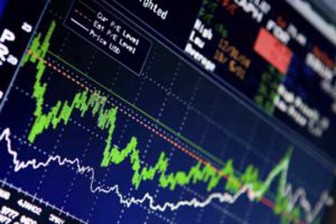 Manufacturing in Asia strengthened in October, data showed Thursday, with China seeing growth in activity for the first time in three months, stoking hopes the region is emerging from a drawn-out slowdown.
Manufacturing in Asia strengthened in October, data showed Thursday, with China seeing growth in activity for the first time in three months, stoking hopes the region is emerging from a drawn-out slowdown.
The figures come on top of other indicators tentatively pointing to an uplift from months of slumber caused by Europe’s long-running debt crisis and a stuttering recovery in the United States.
In China the official purchasing managers’ index (PMI) rose to 50.2 last month, up from 49.8 in September, according to the National Bureau of Statistics.
The result marked the first time since July that the figure stood above the 50.0 mark that indicates expansion, and adds to increasing optimism for the world’s second biggest economy. Anything below 50 points to contraction.
Also Thursday banking giant HSBC released its own PMI for China, which came in at 49.5 for October, up from 47.9 in September. Despite being below 50 the figure points to a continuing uptrend and is a vast improvement on the more than three-year low seen in August.
“This improvement suggests that China’s growth momentum has rebounded and this trend will be sustained further”, economists Liu Li-Gang and Zhou Hao of ANZ bank wrote in a commentary after the release of the official PMI.
Thursday’s numbers will fuel hopes China — a key driver for global growth — will begin to pick up the pace after seeing the rate of expansion ease significantly in recent months.
Latest data on exports, retail sales and government investment also point to a brighter outlook.
Elsewhere in Asia, which has suffered months of contraction in manufacturing activity, other surveys by HSBC showed improvements, with South Korea, Taiwan and India all picking up.
However, while the situation is getting better all but India and Indonesia remain in negative territory, highlighting that further improvement is needed before a full recovery in the sector can be trumpeted.
HSBC’s PMI for South Korea was at a seasonally adjusted 47.4 in October compared with the 43-month-low 45.7 in September, while Taiwan’s rose to 47.8 from 45.6 and Indonesia was up to 51.9, compared with 50.5.
Seoul also on Thursday also reported that exports bounced back in October after contracting for three months as demand in China and Southeast Asia improved.
October exports grew 1.2 percent from a year earlier to $47.2 billion, compared with a 2.0 percent contraction in September, according to government data.
HSBC’s India PMI rose to 52.9 from 52.8, according to Dow Jones Newswires, although the sluggish improvement suggested the sector lacked vigour as the government battles to spur sluggish growth in the South Asian economy.
The indices, compiled by information services provider Markit and released by HSBC, track manufacturing activity and are closely watched barometers for the region’s manufacturing-reliant economies.
Separately, the Australian Industry Group performance of manufacturing index rose to 45.2 in October from 44.1 in September, though remained in contraction for an eight consecutive month.
In a statement the group’s chief executive Innes Willox blamed the ongoing weakness on the strong Australian dollar, soft demand in exports and “flat conditions across the non-mining sectors of the domestic economy”.
Source: AFP




























